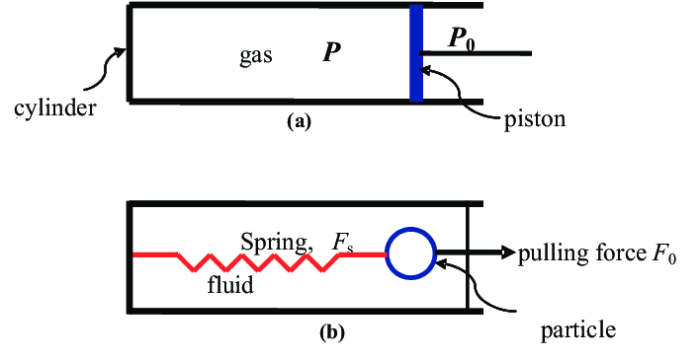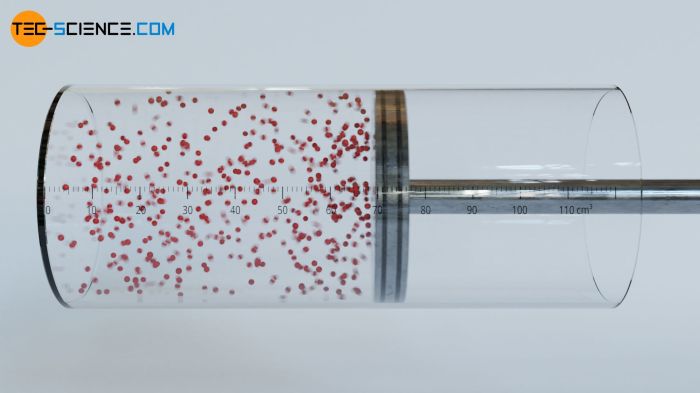As the image shows a piston system where gas is compressed takes center stage, this opening passage beckons readers with authoritative academic style into a world crafted with expertise, ensuring a reading experience that is both absorbing and distinctly original.
Piston systems play a crucial role in compressing gases, a process that finds applications in diverse fields. This article delves into the intricacies of piston systems, exploring the fundamental principles, thermodynamics, and design considerations that govern their operation.
Piston System Overview: The Image Shows A Piston System Where Gas Is Compressed

A piston system is a mechanical device that uses a piston to compress gas. Pistons are cylindrical-shaped components that move within a cylinder, creating a sealed chamber. As the piston moves, it compresses the gas trapped within the chamber, increasing its pressure.
Components of a Piston System
- Piston: A cylindrical component that moves within the cylinder, compressing the gas.
- Cylinder: A cylindrical chamber in which the piston moves, creating a sealed space for gas compression.
- Connecting rod: Connects the piston to the crankshaft, converting the linear motion of the piston into rotary motion.
- Crankshaft: A rotating shaft that converts the linear motion of the piston into rotary motion, which is then transmitted to other components.
- Valves: Control the flow of gas into and out of the cylinder.
Gas Compression Process

Gas compression in a piston system is a thermodynamic process that involves increasing the pressure of a gas by reducing its volume. The compression process follows the following steps:
- Intake stroke: The intake valve opens, allowing gas to flow into the cylinder as the piston moves down.
- Compression stroke: The intake valve closes, and the piston moves up, compressing the gas trapped within the cylinder.
- Power stroke: The compressed gas expands, pushing the piston down, generating power.
- Exhaust stroke: The exhaust valve opens, allowing the expanded gas to escape from the cylinder as the piston moves up.
Factors Affecting Gas Compression Efficiency
- Compression ratio: The ratio of the cylinder volume when the piston is at the bottom of its stroke to the volume when it is at the top of its stroke. A higher compression ratio results in higher gas pressure.
- Valve timing: The timing of the opening and closing of the intake and exhaust valves affects the efficiency of gas compression.
- Heat loss: Heat loss from the cylinder during the compression process reduces the efficiency of gas compression.
Piston Design and Materials

The design of a piston is critical for efficient gas compression. Pistons are typically made of lightweight materials such as aluminum or steel and are designed to withstand high temperatures and pressures.
Piston Design Considerations, The image shows a piston system where gas is compressed
- Piston shape: The shape of the piston affects the distribution of forces and stresses within the piston.
- Piston ring design: Piston rings seal the piston against the cylinder wall, preventing gas leakage.
- Piston cooling: Pistons are often cooled using oil or water to prevent overheating.
Piston Materials
- Aluminum: Lightweight and has good thermal conductivity, making it suitable for high-performance engines.
- Steel: Strong and durable, but heavier than aluminum.
- Composite materials: Combinations of materials, such as carbon fiber and ceramic, offer high strength and low weight.
Clarifying Questions
What are the key components of a piston system?
A piston system typically comprises a piston, cylinder, piston rings, connecting rod, crankshaft, and valves.
How does a piston system compress gas?
As the piston moves within the cylinder, it reduces the volume of the gas, increasing its pressure.
What factors affect the efficiency of gas compression in a piston system?
Factors such as piston design, cylinder geometry, valve timing, and lubrication play a crucial role in determining the efficiency of gas compression.